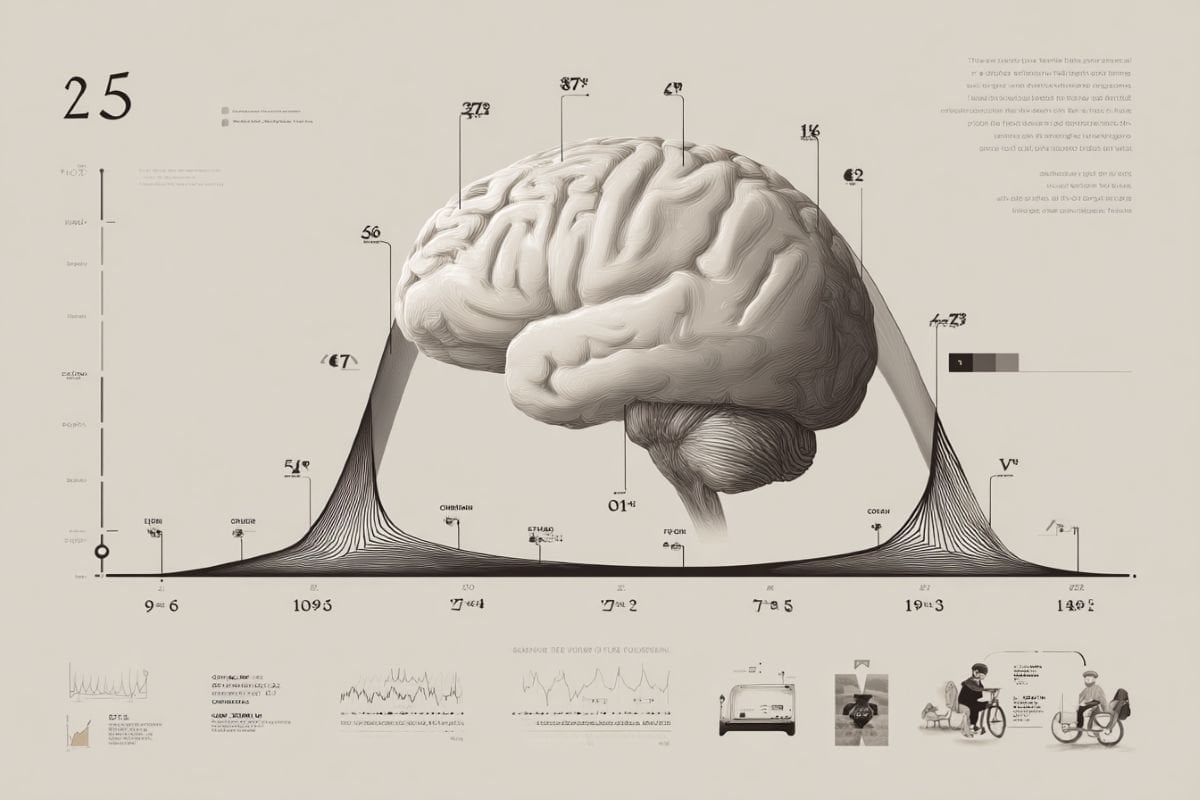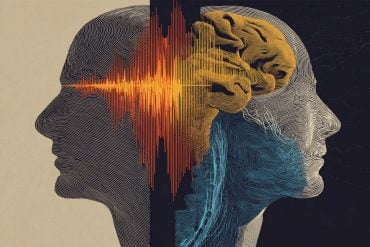Summary: Researchers analyzed 139 neuroimaging studies spanning ages 5 to 85 to map the brain’s activity in cognitive control. They found an inverted U-shaped lifespan trajectory, with brain activity rising through adolescence, peaking between ages 27 and 36, and then gradually declining.
This pattern reflects peak cognitive efficiency in adulthood and highlights the importance of maintaining brain health later in life. The findings deepen our understanding of brain development and aging, offering a scientific foundation for age-tailored cognitive training and brain health strategies.
Key Facts
- Inverted U-Shape: Cognitive control brain activity peaks in early adulthood, then declines with age.
- Peak Interval: Ages 27–36 represent the highest efficiency in focus and cognitive flexibility.
- Brain Health Implications: Results underscore the need for targeted cognitive support in midlife to slow decline.
Source: Science China Press
Cognitive control refers to the cognitive process through which individuals regulate attention, thought, and action to achieve specific goals, allowing them to focus on objectives while excluding distractions.
For example, maintaining concentration on reading in a library where people are conversing relies heavily on the cognitive control’s regulation of attention. In adults, cognitive control abilities typically remain at a high level, resulting in organized behavior.
However, children and older adults may experience behavioral regulation difficulties due to the immature or declining state of their cognitive control systems.
Although the patterns of cognitive and behavioral changes related to cognitive control have been well established and serve as diagnostic criteria for development- and aging-related diseases, systematic research on the corresponding brain activities’ changes with age remains limited.
Revealing the lifespan trajectories of brain activity associated with cognitive control could deepen our understanding of the mechanisms underlying brain development and aging and provide theoretical support for customized cognitive training programs based on regional brain activity characteristics.
Summary of Findings
The study collected 139 neuroimaging studies related to cognitive conflict tasks (e.g., judging the direction of the center arrow in ←←→←← while ignoring the arrows on both sides), encompassing 3,765 participants aged 5 to 85 years.
Through systematic meta-analysis using seed-based effect size mapping (SDM), generalized additive models (GAM), and model comparison methods, researchers were able to construct the lifespan trajectory of brain activities associated with cognitive control for the first time (see Image).
The core finding revealed a significant inverted U-shaped lifespan developmental trajectory, where brain activity gradually increases during childhood and adolescence, peaks during adulthood, and slowly declines in later life. The GAM-fitted peak age was found to be between 27 and 36 years.
Model comparisons indicated that the optimal fitting model for these brain regions was the square root model, rather than the commonly used quadratic function.
Notably, the researchers did not observe other potential trajectory patterns, such as linear changes or an increase-then-stable, underscoring the dominance of the inverted U-shape in the development of cognitive control.
Additionally, it was found that adolescents and older adults exhibited more pronounced lateralization of brain function compared to young and middle-aged adults.
Previous studies have revealed an inverted U-shaped developmental trajectory of cognitive control ability at the behavioral level. This study further elucidates the neural basis of this trajectory.
The findings indicate that the peak intervals of brain functions related to cognitive control occur between 27 and 36 years, aligning closely with the commonly defined middle adulthood stage (young adult phase).
This period coincides with the peak of individual intellectual maturity and overall cognitive ability, providing a scientific explanation for the high social productivity and creativity exhibited by humans during this phase from a neural mechanism perspective.
Notably, the gradual decline in brain function following this peak period suggests the need to prioritize the maintenance and exercise of brain function during middle adulthood to mitigate potential cognitive decline associated with aging.
Therefore, this study not only deepens our understanding of the lifespan developmental patterns of the neural mechanisms underlying human cognitive control but also provides critical theoretical support for formulating targeted brain health promotion strategies and optimizing cognitive functions across different age groups.
Dr. Zhenghan Li from Hangzhou Normal University is the first author of the article, while Dr. Guochun Yang from the Guangdong Intelligent Science and Technology Research Institute serves as the corresponding author. Dr. Xun Liu from the Institute of Psychology, Chinese Academy of Sciences, Dr. Isaac T. Petersen from the University of Iowa, Dr. Lingxiao Wang from Hangzhou Normal University, and Dr. Joaquim Radua from the University of Barcelona made substantial contributions to this research.
About this aging and cognitive control research news
Author: Bei Yan
Source: Science China Press
Contact: Bei Yan – Science China Press
Image: The image is credited to Neuroscience News
Original Research: Open access.
“The lifespan trajectories of brain activities related to conflict-driven cognitive control” by Guochun Yang et al. Science Bulletin
Abstract
The lifespan trajectories of brain activities related to conflict-driven cognitive control
Cognitive control is fundamental to human goal-directed behavior. Understanding its trajectory across the lifespan is crucial for optimizing cognitive function throughout life, particularly during periods of rapid development and decline.
While existing studies have revealed an inverted U-shaped trajectory of cognitive control in both behavioral and anatomical domains, the age-related changes in functional brain activities remain poorly understood.
To bridge this gap, we conducted a comprehensive meta-analysis of 139 neuroimaging studies using conflict tasks, encompassing 3765 participants aged 5 to 85 years.
We adopted the seed-based d mapping (SDM), generalized additive model (GAM), and model comparison approaches to investigate age-related changes in brain activities to characterize the lifespan trajectories of cognitive control.
Our analyses revealed two key findings: (1) The predominant lifespan trajectory is inverted U-shaped, rising from childhood to peak in young adulthood (between 27 and 36 years) before declining in later adulthood; (2) Both the youth and the elderly show weaker brain activities and greater left laterality than young adults.
These results collectively reveal the lifespan trajectories of cognitive control, highlighting systematic fluctuations in brain activities with age.







